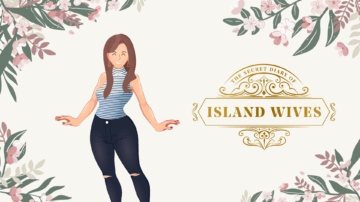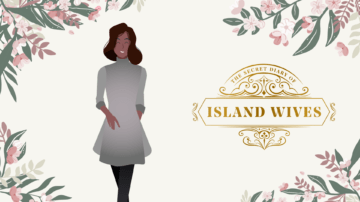Chapter five
Being a designer has a lot of perks. Most people would think they involve free furniture or trips to expos, but really, these are minor when you consider what the job really allows – seeing inside people’s homes.
If the eyes are the mirror to the soul, our homes are the mirror to everything else. That’s why I always wear dark glasses in photographs and try to avoid letting anyone unexpected into my house.
You might think it’s strange being a designer and not wanting to show off your own home, but perhaps that’s exactly why I can’t.
Of course, people have ‘seen’ the house. As in, seen a staged version of the property. And some people have even come here for supper, used the downstairs cloakroom, and wandered around the sitting room.
Yet, each visit is carefully choreographed. Photos are selected for what you want them to say. Flowers are chosen to draw the eye towards a certain table, a part of the room.
T just thinks I’m fussy, in a house-proud sort of way. But it’s more than that.
There’s a reason why some people spend £80 on a candle that smells no better and burns no longer than one a quarter of the price. It’s message and meaning, two things I’ve come to understand a bit better the longer I’ve lived here.
If you buy an expensive candle for someone it says, ‘I have spent X on this gift, so you had better invite me to your birthday lunch’. If you buy it for yourself, it says, ‘I can afford to spend £££ on some scented wax so judge me accordingly.’
And we do judge. In the Islands at least. I’ve lived here so long I have no idea what women elsewhere think about candles, but here, they have as much meaning as runes.
In the hierarchy of wax, Cire Trvdon, Floris, and Diptyque occupy the upper echelons. They all smell divine, have gorgeous packaging. And, most importantly, are not easy to buy here. They remain exclusive in a way that something you can pick up in every airport, or on every high street, doesn’t.
If Cire Trvdon is a bit like a mansion in Paris’s 16th arrondissement, then Jo Malone is the five-bedroom executive home next to the golf course in every regional city. It is upmarket, and expensive, for the location, but it is not exclusive.
If we continue the analogy, White Company candles are another rung down the property ladder. They are the inoffensive item you get someone you don’t know very well, who you don’t choose to get to know any better. They occupy the space that says three-bedroom property with a box room pretending to be a four-bedroom house.
Of course, no-one would ever confess to thinking any of this. Everyone will dodge the point and say. ‘Oh, I just like the smell’, or ‘These are the only candles that don’t make Hector sneeze’. But if we believe that, we are deceiving ourselves as much as anyone else.
I don’t think I’m necessarily a candle snob, because I am friends with people who have all sorts of candles. I just don’t want people making uninformed judgements about me based on my candles.
In some ways I wish I could be brave enough to say ‘I hate candles’ and banish them from the house. But that would probably be bad for business.
Sometimes I hate myself for making money out of managing people’s insecurities, for being part of this system where people worry so much about what people think about them. But then, other times, I basically don’t care. I enter an existential state of not caring about anything.
I can wallow in that state for days if T isn’t around. Keeping busy is the only way to stop myself pulling up the covers and never getting out of bed again. That, and the dogs. It’s hard to be existential for too long when you’ve got a pug snoring in your ear.
So, I get up and get on with it. I choose how people see me in my house and help other women choose how others will see them in theirs. If I need to improve my narrative, I tell myself I’m a manufacturer, I make images just like a factory makes furniture. There is no art. There is no artifice.
Click here to read the next episode of the Secret diary of island wives.
This is a work of fiction. Names, characters, businesses, places, events, locales, and incidents are either the products of the author’s imagination or used in a fictitious manner. Any resemblance to actual persons, living, dead or undead, or actual events is purely coincidental.















